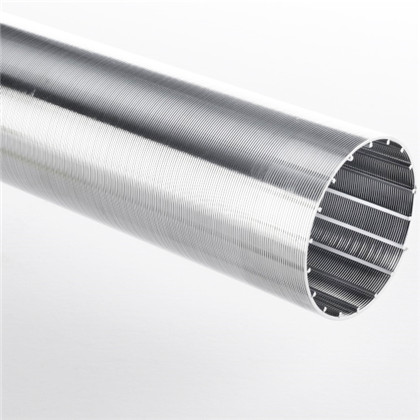Wedge wire screen tube processing involves the manufacturing and fabrication techniques used to create cylindrical tubes made from wedge wire. Wedge wire screen tubes are widely used in various industries for applications such as filtration, separation, dewatering, and fluid handling. The processing of wedge wire screen tubes includes several steps, such as material selection, wire profiling, welding, forming, and finishing.
Material Selection: The first step in wedge wire screen tube processing is selecting the appropriate material for the tube based on the application requirements. Common materials used for wedge wire screens include stainless steel, carbon steel, and other corrosion-resistant alloys, depending on the compatibility with the fluid or material being filtered.
Wire Profiling: In this step, individual wires are shaped into a wedge-like profile. The profiling process involves precision cutting and shaping of the wire to create V-shaped wires with accurately controlled dimensions. The shape and size of the wedges are designed to optimize the filtration or separation performance of the screen.
Welding: welding V-shaped profile wire by Wrapping Cylindrically around support rods under automatic specialized wedge wire screen machine. Each profile wire and support rod is contacted by resistance welding.
Finishing: After forming the screen tube, it may undergo additional finishing processes. This can include surface treatments such as cleaning, deburring, or polishing to remove any sharp edges or surface imperfections. The tube may also be coated or plated to enhance corrosion resistance, improve surface characteristics, or meet specific industry standards.
